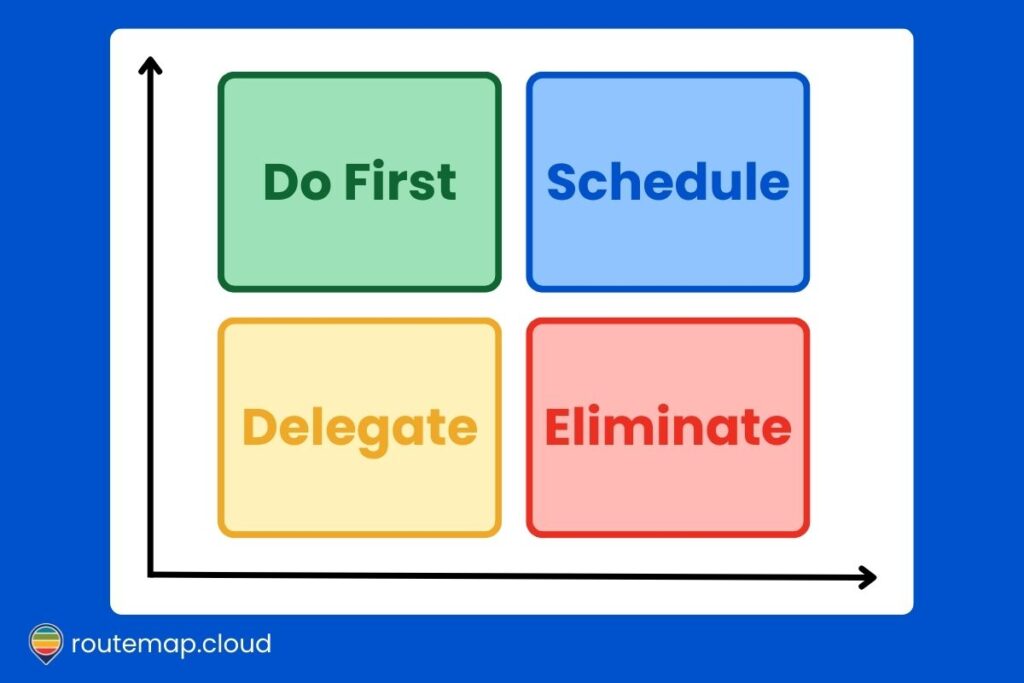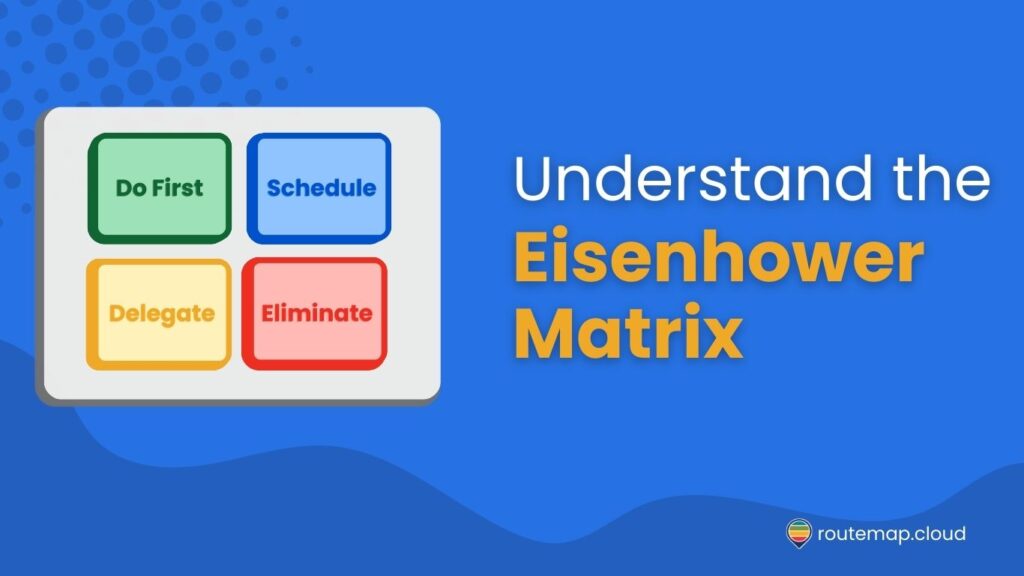Being busy does not always mean being productive. You can spend hours doing every possible task without achieving any of the long-term goals. As a result, this will not only cost you precious time but also cost you your energy and mentality.
It commonly happens when you have poor prioritization. If you prioritize the more urgent tasks over others without considering the outcomes, you can easily overlook the important ones on your list.
And that is where the Eisenhower matrix comes into help. This matrix helps you differentiate important tasks from urgent ones and focus your energy more effectively.
Now, let’s dive deeper into such an outstanding prioritization framework.
What is the Eisenhower matrix exactly?
The Eisenhower Matrix, also known as the Urgent-Important Matrix, is a time management tool that helps individuals prioritize tasks based on their urgency and importance. Moreover, this matrix provides a simple yet powerful framework for organizing tasks by urgency and importance.
By applying this prioritization method to your time management strategy, you can get great advantages such as:
- Focus more on your strategic goals.
- Mitigate stress by clarifying priorities.
- Improve decision-making by highlighting the value of long-term planning.
Moreover, the Eisenhower matrix fosters a proactive mindset, empowering individuals to take control of their time and responsibilities.
The story behind the Eisenhower matrix
The Eisenhower Matrix finds its roots in the wisdom of Dwight D. Eisenhower, the 34th President of the United States and a five-star general during World War II. Renowned for his leadership and efficiency, Eisenhower developed a principle that later evolved into what is now known as the Eisenhower Matrix.
More specifically, this principle was grounded in the distinction between urgent tasks and those that are important – a distinction that has become fundamental in time management.
While Eisenhower himself did not create the matrix, his approach to decision-making inspired its development. The concept of the Eisenhower Matrix as we know it today was popularized much later by Stephen Covey in his book “The 7 Habits of Highly Effective People.”
Covey’s work, which introduces the matrix as part of effective personal management, draws directly from Eisenhower’s philosophy of distinguishing between urgency and importance.
What makes urgent tasks different from important ones?
The principle behind the Eisenhower matrix is simple yet profound: not all tasks are created equal. Some tasks require immediate attention (urgent) while others contribute to long-term goals and missions (important).
Additionally, urgent tasks demand immediate attention, often associated with the satisfaction of another’s needs. Meanwhile, important tasks contribute to long-term goals and personal values.
Unfortunately, the relentless pace of modern life frequently blurs these lines, leading to a reactionary mode where urgency trumps importance.
Therefore, Eisenhower’s method involves categorizing tasks to prioritize those that are truly important. As a result, it empowers you to achieve long-term objectives over those that merely demand immediate attention due to perceived urgency.
Four quadrants of the Eisenhower prioritization matrix
This prioritization framework divides tasks into four quadrants, each representing a different category of tasks. By understanding these quadrants, individuals and organizations can manage their time more effectively and focus on activities that are truly significant to their goals.

1. Quadrant I: Urgent and Important (Do First)
Tasks that fall into this quadrant are both urgent and important. They are critical activities that require immediate attention and action. These are the tasks that cannot be delayed without serious consequences when they are time-sensitive, critical for immediate success or well-being, and often associated with high stress.
So, the nature of these tasks often relates to pressing problems or deadlines. For example, the Quadrant I tasks normally relate to crisis management, urgent deadlines, last-minute preparations for scheduled events, or emergencies.
*What to do: With such tasks, you should address these tasks immediately. It is crucial to aim to minimize the number of tasks that fall into this quadrant by better planning and delegation.
2. Quadrant II: Important but Not Urgent (Schedule)
Quadrant II tasks are important for long-term success and fulfillment but do not have an immediate deadline. More specifically, these tasks contribute to long-term goals and values, not time-sensitive. Therefore, they require planning and commitment.
These tasks are crucial for personal growth, achieving long-term goals, and maintaining a balanced life. For example, they usually involve strategic planning, relationship building, personal development, health-related activities, and learning new skills.
*What to do: You should dedicate time to plan and execute these tasks. Besides, prioritizing these activities can prevent them from becoming urgent, reducing the occurrence of Quadrant I situations.
3. Quadrant III: Urgent but Not Important (Delegate)
This quadrant includes tasks that seem urgent, often due to external pressures, but do not significantly contribute to long-term goals or objectives. These tasks can distract from more important activities if not managed properly.
These tasks can sometimes be emails and phone calls, certain meetings, and interruptions by colleagues. Normally, they appear to require immediate attention, often involve meeting others’ needs, low impact on long-term goals.
*What to do: You should delegate these tasks whenever possible. Moreover, you should assess whether these activities are truly necessary or if they can be minimized or eliminated.
4. Quadrant IV: Not Urgent and Not Important (Eliminate)
Tasks in Quadrant IV are neither urgent nor important. They do not contribute to your goals and often represent wasted time. Identifying and eliminating these tasks can free up a great amount of time for more valuable activities.
Characteristics:
The Quadrant IV tasks relate to excessive social media browsing, unnecessary web surfing, and watching too much television. As a result, they offer little to no value, distractions, or even time-wasters.
*What to do: Without a doubt, you need to eliminate these activities as much as possible. Additionally, you should be mindful of habits that lead to time spent in this quadrant and actively work to reduce or remove them from your daily routine.
Effective use of the Eisenhower matrix involves regularly evaluating and categorizing tasks into these quadrants. Gradually, this approach can enhance productivity and contribute to a more balanced and fulfilling life.
Final thoughts
The Eisenhower matrix serves as a fundamental tool for navigating the complexities of time management and priority setting. By effectively categorizing tasks into its four distinct quadrants, individuals and organizations can sharpen their focus on what is truly essential, strategically allocating their time and resources to what matters most.
This methodical approach elevates productivity and fosters a sense of clarity and purpose. Emphasizing tasks that are important but not urgent (Quadrant II) is particularly crucial, as these are the endeavors that drive long-term success and personal fulfillment.




